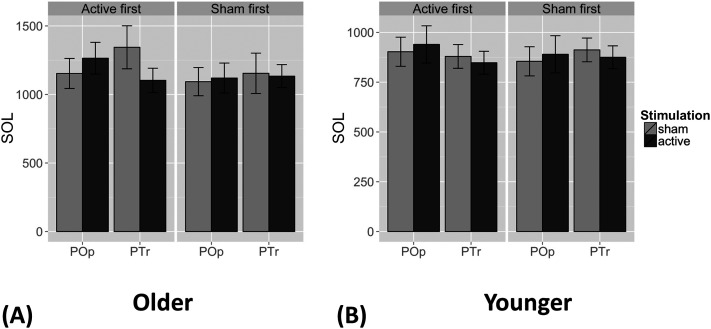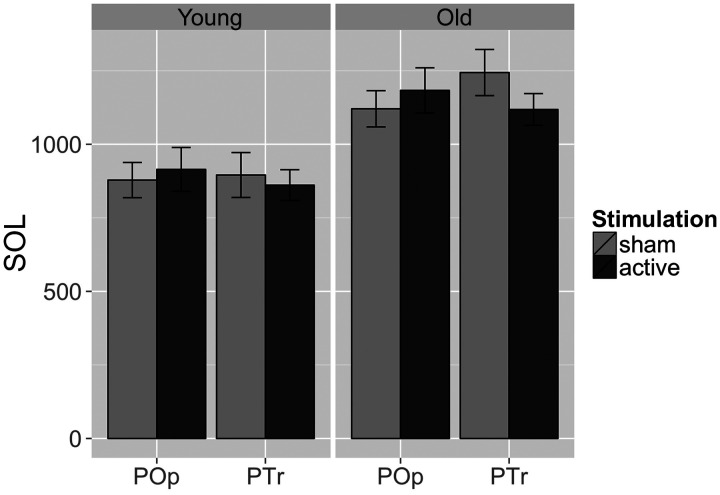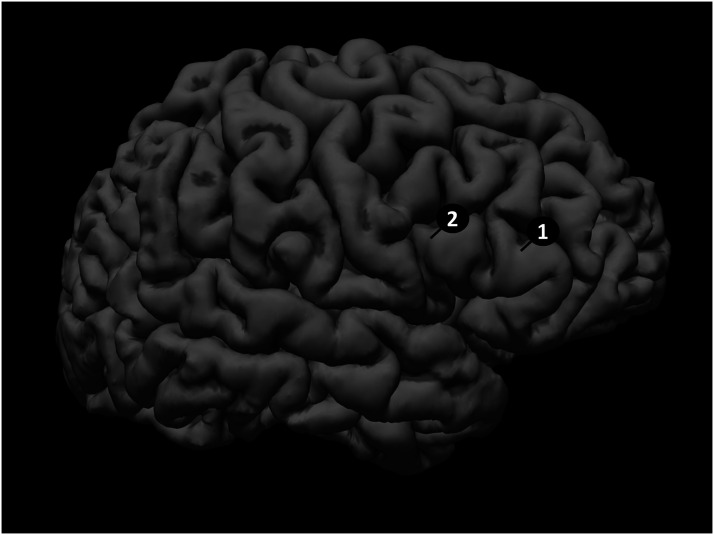Reduced Interference and Serial Dependency Effects for Naming in Older but Not Younger Adults after 1 Hz rTMS of Right Pars Triangularis.
Pub Date : 2022-01-01
DOI:10.1162/nol_a_00063
引用次数: 0
Abstract
Abstract 1 Hz repetitive transcranial magnetic stimulation (rTMS) was used to decrease excitability of right pars triangularis (R PTr) to determine whether increased R PTr activity during picture naming in older adults hampers word finding. We hypothesized that decreasing R PTr excitability would reduce interference with word finding, facilitating faster picture naming. 15 older and 16 younger adults received two rTMS sessions. In one, speech onset latencies for picture naming were measured after both sham and active R PTr stimulation. In the other session, sham and active stimulation of a control region, right pars opercularis (R POp), were administered before picture naming. Order of active vs. sham stimulation within session was counterbalanced. Younger adults showed no significant effects of stimulation. In older adults, a trend indicated that participants named pictures more quickly after active than sham R PTr stimulation. However, older adults also showed longer responses during R PTr than R POp sham stimulation. When order of active vs. sham stimulation was modeled, older adults receiving active stimulation first had significantly faster responding after active than sham R PTr stimulation and significantly faster responding after R PTr than R POp stimulation, consistent with experimental hypotheses. However, older adults receiving sham stimulation first showed no significant differences between conditions. Findings are best understood, based on previous studies, when the interaction between the excitatory effects of picture naming and the inhibitory effects of 1 Hz rTMS on R PTr is considered. Implications regarding right frontal activity in older adults and for design of future experiments are discussed.



1 Hz右三角部rTMS后老年人命名的干扰和序列依赖效应降低,而不是年轻人。
采用1hz重复经颅磁刺激(rTMS)降低老年人右三角部(R PTr)的兴奋性,以确定老年人在图片命名过程中R PTr活动的增加是否会阻碍单词的发现。我们假设R - PTr兴奋性的降低会减少对单词查找的干扰,从而促进更快的图片命名。15名老年人和16名年轻人接受了两次rTMS治疗。在其中一个实验中,在假性和主动R PTr刺激后,测量了图片命名的语言开始潜伏期。在另一组实验中,在图片命名之前,对控制区域——右包部(R POp)进行假刺激和主动刺激。在会话中,主动刺激和虚假刺激的顺序是平衡的。年轻人没有表现出明显的刺激效果。在老年人中,有一种趋势表明,参与者在积极刺激后比假刺激后更快地命名图片。然而,老年人在R PTr期间的反应也比R POp假刺激期间的反应更长。在模拟主动与假刺激顺序时,首先接受主动刺激的老年人在积极刺激后的反应明显快于假R PTr刺激,在R PTr刺激后的反应明显快于R POp刺激,与实验假设一致。然而,首先接受假刺激的老年人在两种情况下没有显着差异。基于以往的研究,当考虑到图片命名的兴奋作用和1hz rTMS对R PTr的抑制作用之间的相互作用时,研究结果才能得到最好的理解。讨论了有关老年人右额叶活动和未来实验设计的意义。
本文章由计算机程序翻译,如有差异,请以英文原文为准。
求助全文
约1分钟内获得全文
求助全文
 求助内容:
求助内容: 应助结果提醒方式:
应助结果提醒方式:


